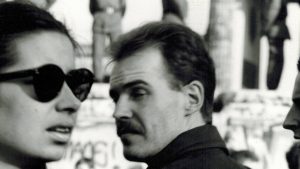Quelle: https://visual-history.de/2025/07/04/cfp-what-will-photography-be-an-invitation-to-speculate/
CfP: Rural Photography in Europe During the Long Nineteenth Century
CfP: Studientage für Fotografie 2025: „Fotografie und Bewegung“ / „Photography and Movement“
Quelle: https://visual-history.de/2025/03/13/cfp-studientage-fuer-fotografie-2025/
CfP: Winter School „Korrespondenzen. Fotografien in der Gegenwartsliteratur“
CfP: Tagung „Visuelle Repräsentationen des Parlamentarismus seit 1789. Ein europäisches Panorama“
Quelle: https://visual-history.de/2024/11/28/cfp-tagung-visuelle-repraesentationen-des-parlamentarismus/
CfP: Centers and Peripheries. Photography’s Geography Lessons
Quelle: https://visual-history.de/2024/10/18/cfp-centers-and-peripheries-photographys-geography-lessons/
CfP: Visualizations of War Captivity
Quelle: https://visual-history.de/2024/04/17/cfp-visualizations-of-war-captivity/
CfP: Mapping German Film Exile. A Transnational Perspective
Quelle: https://visual-history.de/2024/01/24/cfp-mapping-german-film-exile/
CfA: Jüdische Filmgeschichte(n) transnational: Europäische Perspektiven
Screenshot der Website: Jüdische Filmgeschichte, Filmuniversität Babelsberg Konrad Wolf
(Post-)Doktorand:innen Kolloquium
Jüdische Filmgeschichte(n) transnational: Europäische Perspektiven
Datum: Donnerstag, 04.03.2024
Ort: online
*English below*
Filmproduktion und Filmkultur haben seit ihren Anfängen nicht nur durch den Vertrieb und Verleih von Filmkopien und Technologien, sondern auch durch die Vernetzung von Personen transnationale Netzwerke geschaffen. Ebenso war das frühe Schreiben über Film und die angehende Filmtheoriebildung von der Pluralität der Stimmen aus den verschiedenen Bereichen und europäischen Kontexten geprägt. Transnationale Ansätze in der Forschungsliteratur haben Analysebeispiele zutage gebracht, wie die Untersuchung verschiedener (Sprach-)Versionen von Filmen und der personellen Vernetzungen im
internationalen Starsystem, die neue Erkenntnisperspektiven auf Filmgeschichte und Filmgeschichtsschreibung ermöglichen.
In diesem Geflecht von Film und Kinokultur können jüdische Erfahrungen und europäische Migrationsgeschichten als spezifische Erfahrungen und eigene Diskursnetzwerke sichtbar gemacht werden.
[...]
Quelle: https://visual-history.de/2023/12/19/cfa-juedische-filmgeschichte/
CfP: In the Thick of Images: Law, History and the Visual
Screenshot: University of Lucerne [01.12.2023]
The ‘visual turn’ has long been turning in critical and cultural studies of law (see Douzinas & Nead 1999). In the past twenty-five years, a growing body of scholarship has evolved that emphasises law’s “constitutive imbrication” (Crawley 2020) with an array of visual forms, and elaborates on the ways in which images “shape and transform legal life” (Sarat et al. 2005).
Weaving together an eclectic set of theories, concepts, methods and materials, such studies refuse thin readings of images as merely illustrative of law, and invite us to think more deeply about their ideological and visual operations – about the meanings they carry and make available, about their material presence and affective effects, and about the cultural-political and cultural-legal work they perform across their multiple contexts of production, circulation and reception.
[...]
Quelle: https://visual-history.de/2023/12/01/cfp-in-the-thick-of-images-law-history-and-the-visual/








